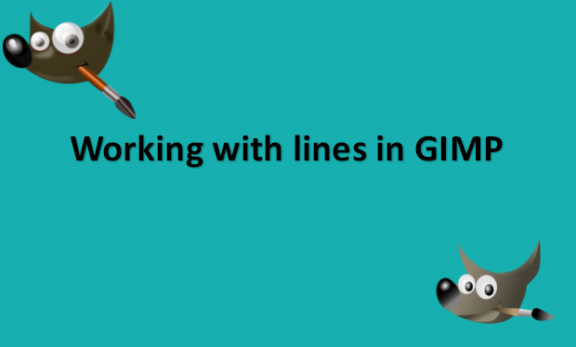Although GIMP is a fantastic tool for making digital art, it is always a good idea to grasp the fundamentals before getting started. Since most of GIMP’s drawing tools are brush-based and have similar fundamental controls and settings, this quick tutorial works with all of the program’s drawing tools, from the Paintbrush to the Clone tool. The brush settings in GIMP are incredibly detailed and let you produce a large variety of effects. However, there is one important choice that can have a significant impact on your line when utilizing an autofill method. If you keep the mouse button depressed, GIMP draws by repeatedly stamping the brush’s shape onto your image. The Spacing setting determines how frequently that stamp is used, and different settings can produce anything from a line with a smooth edge to stamps that are individually spaced and have distinct shapes, like dotted lines. We will provide you with steps you can use to work with lines in GIMP through different methods and tools that are available in GIMP.
How to draw a straight line in GIMP
The Shift key is a straightforward tip for using your brushes to create straight lines. But using the Paths tool to pre-plan your line will give you a little more control over the outcome. Contrary to what you may anticipate from other programs, the Paths tool does not allow you to draw vector shapes, but you can utilize the paths it generates to design a network of interconnected lines quickly.
You can draw a straight line in GIMP by using the following steps:
1. Open GIMP on your computer.

2. Go to the File menu.

3. Click on Open or New to open or create the image file you want to draw a straight line.

4. Select the Paths tool from the toolbox.

5. Check to ensure that the Edit Mode is set to Design in the Tools Options panel to ensure you can draw any new points from your path.

6. Click on your image to set the first point on your line and repeat to draw out the exact path you would like.
7. Click on the Stroke Path button in the Tool Options panel.

8. GIMP will show the Stroke Path options dialog box.
9. Select the Stroke line function, the default setting, or the Stroke with a paint tool option.

10. Expand the Line Style section if you select Stroke line to set the Line width.

11. Select the tool you would like to use from the drop-down list, and the Stroke with a paint tool feature will use the settings for the tool.

You have drawn a straight line! The ability to modify the points along the path before you commit to drawing anything is the Paths tool’s major feature, and it may be incredibly helpful for laying out a succession of strokes.
How to get rid of dotted lines in GIMP
The yellow dotted line encircles a layer in the image window can be seen or hidden with the Show Layer Boundary command. The dotted line is discernible only when the layer is smaller than the image window. The layer boundary is hidden by the image border when the layer and image window is the same size.
You can get rid of dotted lines in GIMP by using the following steps:
1. Open GIMP on your computer.

2. Go to the File menu.

3. Click on Open to load the image with the dotted lines you want to get rid of.

4. Click on View in the Main Menu.
5. Click the Show Layer Boundary box to uncheck the option.

You have now successfully gotten rid of the dotted lines!
How to thicken lines in GIMP
There are several methods for thickening your line. Increasing your stroke count is one strategy. Using a thicker pen or pencil is an alternative method. Another option is using a different kind of paper, such as cardstock. We will provide you with the steps you can use using the thickened pen.
You can thicken lines in GIMP by using the following steps:
1. Open GIMP on your computer.

2. Go to the File menu.

3. Click on Open or New to open or create an image file.

4. Select the line you want to thicken by clicking on it.
5. Click on the Pen tool in the toolbar.

6. Select the size of the line you want to create.
The line created should be thick according to your preferred size.

